At this live event in Austin, Texas, I was joined by Austin Energy executives Lisa Martin and Michael Enger to discuss how a progressive municipal utility charts a course to clean energy in Texas. We explore their multi-pronged approach to reaching 100 percent carbon-free electricity by 2035, from expanding distributed energy resources and battery storage to piloting first-of-its-kind geothermal technology.
(PDF transcript)
(Active transcript)
Text transcript:
David Roberts
Hi, hi, hi! This is Volts for February 14, 2025, "Austin's quest to reach net zero." I'm your host, David Roberts. In January, Canary Media held two live events in Texas, one in Austin and one in Houston. At both of them, I recorded podcasts for you folks!
This one, from Austin, is a conversation with Lisa Martin and Michael Enger, who are, respectively, the chief operating officer and the VP of energy market operations and resource planning for Austin Energy, the city's municipal utility.
Austin Energy has adopted a goal of electricity decarbonization by 2035, and it is located in a city, Austin, that is targeting total citywide decarbonization by 2040.
How is it doing on those goals? What technologies is it drawing on? And why is it still building new natural gas plants? We dig into all of this and more, with a few spicy audience questions thrown in at the end. Enjoy.
Lisa Hymas
This is David Roberts, he is the founder and journalist behind Volts, which is a podcast and a newsletter that you all should be following. Welcome, David. Thank you for being here. We're also excited to have two folks from Austin Energy with us today. Lisa Martin is deputy general manager and chief operating officer, welcome, Lisa. And Michael Enger is VP of energy market operation and resource planning. So thank you all for being here and let's kick things off.
Michael Enger
Thank you.
David Roberts
Hi, everybody. Thanks for coming. I'm sorry to be sitting here awkwardly looking at my phone. Normally, when I do this, I'm in my home office in my underwear, and nobody's looking at me. So, I don't know how to do this in public. So, Lisa, I thought it would be good to start, just to frame things, maybe to tell us what mandates Austin Energy is operating under. Some, I think, are self-chosen. And then there's the city council, and then there's state and federal stuff. So, like, what targets are you trying to hit just to frame sort of everything here?
Lisa Martin
Well, in general, we operate in a highly regulated environment. There's some federal, there's some state, there's some local. But I think what you're trying to hone in on really is related to some of our renewable energy in our carbon-free energy, clean energy, space and whatnot. And so, essentially, Austin Energy has a resource generation and climate protection plan. And the city council just adopted the most recent version of that. That's a plan that goes out to 2035 and it sets a goal of 100% carbon-free by 2035.
David Roberts
Carbon-free power generation, power use or carbon-free Austin?
Lisa Martin
Carbon-free generation as a percentage of the load that is necessary to serve the customers in Austin. And those percentages have changed over the years. They've increasingly grown. I think the first one was adopted back in 2003. And every so many years, the plans have adopted either an increasing goal for the same year or a higher goal for a higher year until you get to 100%. And then that's the goal. Right.
David Roberts
And then, this is in the context, is it not, of Austin having a total decarbonization goal sort of around that? Right. Like the rest of the non-power generation stuff. Is Austin trying to get all the way?
Lisa Martin
Yeah. So, Austin also has a climate equity plan, and the goal there is net zero by 2040.
David Roberts
2040. So, that's pretty pressing. Can you give us a sense of what the current portfolio looks like? The current Austin Energy portfolio? Like, where is Austin getting its energy now, roughly?
Lisa Martin
Yeah, that's Mike's space.
Michael Enger
Sure. So, we have a very diversified portfolio right now. We are a one-sixth owner of the South Texas Nuclear project, which is the nuclear power plant down near Bay City. We own about 600 megawatts of coal that we run very low through environmental dispatch. We have about 800 megawatts of natural gas here in the Austin area. That's a combination of a combined cycle as well as 10 peaking units. We have a wood waste facility out in East Texas, Nacogdoches, the biomass plant. We have about 1800 megawatts of wind under contract. And that's throughout the state, mostly west and down along the coast and then in South Texas.
And then we have about 975 megawatts of utility-scale solar throughout the state as well, with about 175 right here in Austin.
David Roberts
Right. And so, just to be clear how things were, you are purchasing power from ERCOT, right? Like any ERCOT customer, basically. So, you have a choice of any ERCOT resource.
Michael Enger
So, the way ERCOT works is, you are offering in all of your generation on offer curves, and then it is using security constrained economic dispatch to optimize the overall generation fleet to serve all of Texas. And then, we are buying all of our load from ERCOT. So, you sell all of your generation into ERCOT, and then you buy all of your load from ERCOT.
David Roberts
I guess one question, maybe this is naive or dumb, but if you're trying to get to 100% clean, it seems like within the state of Texas, cumulatively there's enough clean energy to satisfy Austin. So, why couldn't you just buy all clean tomorrow? What's stopping you from doing that?
Lisa Martin
I'll give it a start, and then Mike will come in and fill in the details. But yeah, it's really interesting because when Mike talks about our generation portfolio, it's quite diverse in a couple of different ways. Not only in the fuel mix that he talked about, but also in the geographic location. And one of the benefits of working and operating in this ERCOT market is that we don't have to have the generation right here. You can just buy it from wherever. But as you noted, there's a ton of wind and solar and renewable and carbon-free generation in the market.
But you also have to make sure that generation can get to the load where the customers are using it. And that's not always the case. That's happening in the market. There are pricing signals that are happening in all different places. And so people just say, "Well, why don't you just contract, Mike? Why don't you just contract for more PPAs for renewable energy? You could just do that for free." Right? And the fact that the prices are constantly changing and that we're buying at the price of what generation needs to be to serve the customers in the Austin area, but we're getting paid the price that the generation is, you know, garnering wherever it's located.
And sometimes, the signals are saying, "Too much over there, not enough here." That really throws things out of whack and really makes it difficult for us to serve our customers in a reliable and affordable way. What would you add to that, Mike?
Michael Enger
I think it was perfect.
David Roberts
Another consideration that just occurred to me is, how big of a piece of the puzzle are transmission costs? Because, of course, wind out in East Texas is dirt cheap, like below zero sometimes, but then you have to pay to get it over here. How big are those costs as a — ?
Michael Enger
Yeah, so when you do a power purchase agreement to buy a renewable, you are going to pay a fixed price for every megawatt they produce, and then you're going to get back the market price. So when you see wind below zero out in West Texas, that may not be beneficial for our rates. For example, you typically see prices the lowest when the intermittent resources are generating the most. And so, that can start to put potential pressure on rates. So, I would say that that's maybe part of it. But transmission costs are under what is called a t-cost where transmission is still a regulated market, and it's uplifted to everybody in the state.
I think last year, the net cost to Austin Energy on transmission costs was a little bit over $90 million. So, there's a significant amount of transmission cost and investment going to be able to move all the electrons to the places in the state where we need it.
David Roberts
At least in theory, there's a case to be made for the merits of local energy then, right? Is there not? I was going to get to this later, but let's just go there now. There's a value of solar — so just to back up a little bit for context in case everybody has not been keeping up with these things. Big fights over net metering and solar: How much do you pay residential and commercial consumers for the solar power they generate? Every utility in the country, practically, is fighting over this. The rates are getting lowered here and there. And you, I think, or Texas did a big value of solar proceeding to figure this out.
And then also, there's the... I can't remember the name of it. Mike, help me out. The solar offer?
Michael Enger
The Solar Standard Offer.
David Roberts
Thank you. The Solar Standard Offer. So, maybe tell about this standard solar offer in the context of the value of solar proceeding.
Michael Enger
Sure. So, we often will go out and do purchase power agreements for renewables. We do have a value of solar program for residential. If they want to put solar panels on their roof, we'll pay them for what they produce and then we'll charge them our retail rate for what they consume. Oftentimes, there are situations in Boston where the individual who owns the building is not the person paying the electric bill. That's the renters or the tenants or who's leasing the building. And so, there is kind of a differential in values there for the lessee versus the building owners.
What a Solar Standard Offer does is, it produces a rate we're willing to buy that power from and allow developers to maybe go out and lease some of those spaces on the roofs of buildings and parking lots in order to get more local solar here to help benefit our community and kind of get away from what is referred to as a "split incentive."
David Roberts
And, are there... This is a bit of a niche question, but recently on my pod, I had a discussion with a guy named Pier LaFarge who — there's this long-running tension in the clean energy world where it seems like utilities are somewhat hostile to distributed energy resources. This fight back and forth — are not hostile but do not properly value. And so, his solution is just, why don't utilities just procure distributed energy resources? And that way, they could, instead of just reacting to them coming online, wherever they come online, and whenever they come online, they could have some control of like, "We need a bunch here, like, you know, the grid's congested here."
Procure DERs in an active way. Has there been any discussion of that at Austin?
Lisa Martin
As a matter of fact, that particular podcast was homework for one of my staff meetings so we could have a conversation about how we could continue to think about readying the grid for more and more of what we call customer energy solutions, distributed energy resources. I'm going to take the long way around to get to the answer to your question.
David Roberts
Please, that is the podcast way.
Lisa Martin
But as you noted just a few moments ago, there is a real argument for the value of local generation. And that generation can come in all different shapes and sizes. And yes, we do want to make the best use of all of the different variety of resources that are available across the state. But what we have is a real problem where we need to make sure we can serve our customers. Our mission is to provide safe, clean, affordable, and reliable energy and excellent customer service. We're a vertically integrated utility in the deregulated ERCOT market, and we are focused on what our community needs and they want all of those things.
By the way, they say, "As you go for that clean energy transition, make sure that it's equitable too." So, we have to be thinking about a lot of different variables here and trying to manage them all. All that to be said, prioritizing customer energy solutions like the rooftop solar, the battery storage, the electric vehicles in people's garages, the demand response, energy efficiency, that is the priority. That's the first part of our resource generation plan. And Austin Energy has been a leader in that area for a very, very, very long time. And so, what I'm ultimately looking to get at is that when people say, "Hey, wait," — I was actually surprised at the very end of that podcast where the guy says, "Well, there's actually a sweetness in the utility because they're trying to work through these complex areas."
And you were like, "I don't ever hear people describe utilities that way." And I was like, "What do you mean? Why don't people love us? We were just here trying to help you provide work for the community. We are public power. We are you." Right. And so then I was like, "Oh, wait a second, wait. Okay, got it. That's not the way everyone thinks about it." And sometimes they just mix us up with... Not that all utilities are bad, but IOUs who have this built-in profit margin and whatnot.
David Roberts
Yeah, I think IOUs were mostly the targets of...
Lisa Martin
I know, I heard it. But I loved when he said, "There's a sweetness in it." I was like, "Yeah, a lot of hardworking people trying to do what's best for the community." And the community wants distributed resources. And that's a huge part of what we do and prioritize, figuring out the right value to make sure that we can not only integrate those resources into our system, but that Mike's real-time desk can use them appropriately on the market to make sure that they can extract the most value to keep costs down for our customers and that we can still provide reliable power.
It's kind of all part of the equation.
David Roberts
Yeah, so Mike, how do distributed energy resources interact, if at all, with the wholesale ERCOT market? Because you can aggregate them and bid into the markets, right? So, are you procuring DERs through the wholesale market, or are you trying to sell DERs into the wholesale market? How do those things have anything to do with each other?
Michael Enger
So, we have a few different ways we approach that. I would say one is aggregating like demand response, for example, which isn't maybe distributed energy resources. It helps us reduce our —
David Roberts
You're acting as the aggregator, the utility is acting as the aggregator, right?
Michael Enger
We work through a third party, and then we dispatch, but we aggregate that together. That will help us reduce load. So, I mentioned we buy all of our load from ERCOT, and we sell our generation in, so we're able to reduce load. That lowers the overall cost that we're spending. We are also looking at aggregating other resources. Some resources could be settlement-only generators. If it's large enough, it can settle into the wholesale market, and we'll represent those as a qualified scheduling entity. We're also looking at another program. We have customers that are very interested in resiliency and backup generation for when we do have some of these extreme weather events that were mentioned earlier.
We can help, benefit, and work together. It is cheaper for them to put in a diesel generator for backup, which has much worse air quality. But we can partner together and look to have them install natural gas generation. But then, we should be able to call upon that for a handful of hours, maybe 200 hours a year for those really scarce events where, as we talked about, the sun is predictable with solar. But sometimes, we do get through those periods where we don't necessarily have that sunny period, or we have periods where we don't have windy periods or the sun's going down and there's not enough wind, and we end up with these really tight ramping issues.
And that's where we can lean on that and benefit everybody in Austin. So, we can help the customers that are customer-driven and want that resiliency because of some of the winter experiences they have had. We can help make that a cleaner solution for everybody in Austin. And then we can leverage that and use that during those really scarce events to lower rates for everybody in Austin so that we have another way we're looking to utilize distributed energy resources.
David Roberts
So, the idea is that during those tight times, you can call on those households basically to consume less or to release more out of their batteries, or —
Michael Enger
To consume less or use backup generation to produce more.
David Roberts
Do you have enough of that now that it is like a substantial tool in the toolbox or is it still kind of pilot-y?
Michael Enger
We're looking to grow it.
Lisa Martin
Yes, I will say that several years ago, I got to work on a project. It was DOE grant-funded, called the Austin SHINES Project. The SHINES stands for Sustainable Holistic Integration of Energy Storage and Solar PV.
David Roberts
Well done.
Lisa Martin
DOE acronym, a DOE acronym. And we looked at integrating battery storage solar at three different levels along the utility value scale. We were looking at residential, commercial, and what I would say utility scale, but it was at the distribution level. And then sometimes we were doing lots of different types of controls. Sometimes it was autonomous control, set it and forget it on the smart inverter on someone's solar PV. Sometimes it was third-party aggregated controls, and sometimes it was utility control. And this information is a little dated now, but that study, if you will, really helped show the value of distributed resources, but also realizing that they all have different use cases at different times.
And when you can find a management system that can optimize them, the magic to me is in the control of it. You got to not only monitor it, but also be able to control it. Is the DERM system and is Mike chasing price spikes or is he doing energy arbitrage or is it congestion management or voltage support? All of them have values in different ways. I keep hearing different people and entities talk about one or two. I think for it to really take off, we got to kind of try to stack all those values together.
David Roberts
Yeah, and EVs are part of that too. Are you guys trying to induce EVs? Or more to the point, the EVs that are out there — this is a worry of utilities everywhere, as you've got basically giant loads wandering around totally out of your control, you know, swamping the grid at certain times. Are you doing anything to try to sort of coordinate EV charging or use EVs as an asset rather than a liability?
Michael Enger
Yeah, we do managed charging today where we could reduce the charging during peak times or times that we need to. And we're also studying vehicle to grid as well through a small pilot project.
David Roberts
And what about speaking of my other pods, as I so painfully often do, what about also taking off, specifically taking off here in Texas is this idea of virtual power plants, which is just aggregators, like we were saying, but you know, on a larger scale and big utility scale, are those on your radar? Are you procuring power from big VPPs out there in Texas?
Michael Enger
We're working on a project to define scoping for that DERM system that would allow and facilitate that virtual power plant. And we're working on incentives to get more batteries out and distributed throughout Austin so that we have more control and can really manage that. So, that is something on the radar, something we're working towards right now.
David Roberts
I guess all my questions have been sort of circling around this, which is that it seems like there are lots of, you know, so the big problem with renewables, if you want to see it as a problem, is variability. You need to fill in the gaps. You need something to smooth it out. Traditionally, that role has been played by natural gas. But now we're starting to see alternatives to natural gas coming online, including VPPs, including DERs, including geothermal, which I want to talk about in a minute. So, why are you proposing to build new natural gas plants?
Lisa Martin
That was the ultimate question we got asked over and over again. It's not at all new. First, I would say that what we were trying to do, and what we did, was the resource generation climate protection plan is a policy document and it had a prohibition against any new fossil fuel resource. We're trying to say that we need to make sure that we have all the tools in our toolbox to be able to mitigate all the various types of risks that we see. The risks are real.
Sometimes, it's on the wire side, the transmission congestion, sometimes it's the financial risk in the ERCOT market, sometimes it's the extreme weather or it's the load growth that we're talking about. And all these things are coming and hitting us in a number of different ways. We are experiencing a very different energy landscape than when our last resource generation plan was adopted in 2020, which was before COVID, it was before Winter Storm Yuri, it was before the ice storm of 2023, Winter Storm Mara, that anyone in Austin felt drastically as well. And so, lots of things had changed and we needed to make sure that we kind of opened the doors to provide some flexibility for us to be able to evolve and move through the changing energy landscape.
And so, the plan sets forth four major buckets. Prioritizing customer energy solutions is first and foremost. Developing local solutions is next. One of those local solutions, in addition to local solar and local utility-scale batteries, is more efficient natural gas peaker units. They're just an important tool in the toolbox because, as you said, there's variability. People say, "Why not batteries?" Well, there's a duration situation, especially in an extreme weather situation. Plus, they can help us mitigate the financial risks. So, it's about using them smartly, using them when they're needed. And right now, the tools in our toolbox, Michael said, are about 800 megawatts of current natural gas.
A lot of those are peakers. Most of that's peakers, but they're old technology, they're not as efficient. So, why not? We're going to fill the gap. We've got a need, we needed it yesterday. They could have paid for themselves and some of the congestion costs that we had to pass on to our customers. Then, why not try to stop that bleeding and then continue towards our commitment to decarbonization? That's a huge component of the plan. And the last and final bookend of it is furthering the culture of innovation to make sure that we're adopting the evolving and maturing technologies that are going to continue to emerge that help us reach those clean energy goals.
David Roberts
Did your plan not also involve delaying the shutdown of some of those older natural gas plants?
Michael Enger
Yeah, I mean, the plan that passed did mention we will not prematurely shut down natural gas plants here locally until we have viable solutions for that replacement. Newer, more efficient peaking units could be part of that viable solution. And just one other thing I might add is having peaking units in the right location also makes us a viable black start utility. What a black start utility is, is there is a handful of utilities that if the whole grid does fail, which we hope it never happens, they're the ones putting it back together. And if that ever did occur, we want to be part of the solution.
We don't want to be sitting on the sidelines waiting for other people to fix the problem.
David Roberts
Well, Lisa sort of already asked this question in her answer, but I'll just pick it out and amplify it. I was looking at the portfolio and it said you have three megawatts of battery storage.
Lisa Martin
Yay, SHINES.
David Roberts
Which I first thought was an error, I had to go find a second source to verify. Like, that seems crazy to me. Why is that not 300? Why is that three and not 300? Why not batteries? Because batteries can do this. That's what they're for. They can come on. And duration is just a quantity question. You know what I mean? Have enough. You can have battery power for a long time. So why is the battery — why do you have so little battery power now? And why not just double down on that?
Lisa Martin
So we're going to have slightly different answers. They're not going to be competing. They're just slightly different answers. So I'm going to go first and let Mike fill in the gaps. When I say "Yay, SHINES", I know people are like — I used to stand in front of people and say, "Well, we have these goals." One of the old gen plans had a goal that had 10 megawatts. And someone would say "10 megawatts?" And this was like, I don't know, 2016, 2017. They're like, "That's your goal?" And I was like, "I'm trying to get the three megawatts off the ground."
Like, you know, because when you're dealing with the small ones, right? I mean, there's a lot of a learning curve there. That said, right, people are building them in hundreds of megawatts, right? And so then it's a question about space. So, I just want to clarify that that 3 megawatts does not count the amount that's on the sides of people's homes, right? That's just the culmination of the two utility-scale smaller batteries that we have in the Austin area.
David Roberts
Utility-scale battery installations: In front of or behind the meter?
Lisa Martin
They're in front of the meter, yeah. They're connected directly to the distribution feeder and they're about 1.5 megawatts each. And one's in the Mueller neighborhood. And different technologies and lots of learning curves and challenges. What we found there, though, was that the value when we did the analysis in SHINES was that the value of investing and putting more of those — sometimes people say they're substation batteries, right? They're of a certain size. They're connected to the distribution grid. Less than 10 megawatts. In this case, I think there was actually a study by the Webber Energy group that talked about keeping them less than a megawatt.
And that's where you get the value, which is true because it helps reduce the 4CP cost. But essentially, the value we were receiving from them in terms of operating in the market, it wasn't offsetting the costs. And so, we didn't continue to build out more of that. Now, why don't we have a bigger battery storage system in Austin? Mike can talk about that. And then, you can also just kind of maybe open the curtain to the battery storage RFP.
Michael Enger
Sure. So, we did look at a very, very large utility-scale battery right here in Austin back in 2021, 2022. Ultimately, because of some of the uncertainty that was going on in the supply chain and tariff risks, we had to take a pause until we redid the resource plan. After this resource plan was approved, we do have large battery goals for local utility-scale batteries, and we are planning to issue an RFP hopefully on Thursday, January 30th, is what my team tells me. But we'd like to get that out before the end of the month, giving people about eight weeks.
"And we're looking to do 100 to 150 megawatts, two to four-hour duration battery right here in Austin. And we'll be looking to take that back to city council for approval this summer."
David Roberts
And that would be a big single installation, not an aggregation of consumer batteries?
Michael Enger
Well, we are going to request proposals and then we'll look to optimize the projects in the best, most capital-efficient way to meet our customers' needs.
David Roberts
So am I right then in thinking that if you're committed to total decarbonization by 2035, you're implicitly committed to shutting these new natural gas plants down by 2035, are you not?
Lisa Martin
The answer is yes and no. And every time I say that and pause, there gets to be a huge chuckle from the audience because the goal is 100% carbon-free as a percentage of load. And then people go, "Oh well, that means you're trying to sneak around the back and say you just want to still keep these things running and whatnot." The idea is — between "Can we shut down those units now?" or "Can we predict today that in 2035 we can shut them down?" — it's going to depend on what other resources are available to help us provide clean, affordable, and reliable energy to our customers.
What the plan says is 100% as a percentage of load. The intent, the goal, is to have the supply stack as well. But we adopted the phrase from Dr. Michael Webber and threw it in our plan as well, "Do your best and clean up the rest." And so, if technology doesn't allow us to get there, then what can we do to make sure that the emissions coming from the stacks are as minimal as possible, as little as possible, to essentially get to the equivalent thereof? And time will tell because there's 10 years between now and then.
And we got to see how that culture of innovation continues to adapt and adopt.
David Roberts
Can you shut them or can ERCOT, like, once you open that and they're running, cannot ERCOT just come in and say you have to keep running them? Like, is it yours? Do you have the final decision over whether they shut down or how they operate?
Lisa Martin
I got this question a ton during the resource generation plan as well. Do you want to start? You are going simpler than I am.
Michael Enger
You submit a notice of suspension of operations, and then ERCOT will look at the reliability site, and they can RMR (Reliability Must Run) that unit and put it under contract. In that case, ERCOT runs the contract or pays the cost of the plant and has you operate as they dictate or for reliability purposes. But those typically tend to be shorter in nature while they find another solution because everybody pays for that Reliability Must Run contract.
Lisa Martin
Yeah, and I want to just throw in there. So, it's considered an out-of-market condition, right? It's done for a reliability purpose. They have to be able to prove that there's a reason for it. As Michael said, there's a short duration for it. It's something you don't want to happen. It's an unwanted outcome. And so, what happened is when we were talking to city council and stakeholders in the community, people would just say, "Oh, well, you have no control over it if it gets built, there's absolutely positively zero control. ERCOT can say you run it anytime you want, or they could say you have to keep it running no matter what."
And that's simply just not the way that the mechanism works. It's to handle a short term — because it's the only thing else that's out there. And there are mechanisms that are being put into the ERCOT market to reduce the use of both RMR units and RUC (Reliability Unit Commitment) units, which is when they tell you to turn it on because you have to, because it's the requirement.
David Roberts
I actually appreciate you not saying, "Oh, we're just going to run them on clean hydrogen." But I'm going to give you a chance to say that now if you want to. But do you — how realistic do you think green hydrogen is? Is it realistic enough that you're including it in your plans in a meaningful way, or is it just more of a wait and see thing?
Michael Enger
I think we're constantly looking at all of the available technologies and monitoring the market and looking to see if that can be a reality. I think in reality, you're going to need more of a hydrogen economy in an area to make it work with multiple demand off-takers and customers. I will say that, you know, there was a big push on the rules around that to where it's not even needs to be made by wind and solar anymore. That if you use nuclear and it's low carbon, that you may be able to qualify for the whole credit.
And I believe you're already seeing some people in Texas working towards that. So, I think it's something we're going to monitor, keep watching. It does have some benefits, it has some challenges, but there are multiple technologies that we constantly monitor and look at, and see when they're ready to delve into.
David Roberts
When are you going to escape coal? It seems like that ought to be job one for any decarbonizing utility. You got this lingering coal bit left. And I believe in your new plan you extended that. Do you have a target date for being able to say, "We're coal free" here?
Lisa Martin
Yeah, so we don't have a crystal ball. So, we don't have a target date. And when you say "We extended it," we didn't exactly extend it. We just missed the date before, because the old plan said "shut it down by 2022" and there was no viable path to get that shut down. So, by saying in our plan that we're reaffirming our commitment to exiting coal and using the REACH program in the meantime, and I'll let Mike talk about REACH in a second, people say, "Well, you're extending the deadline." We're like, "Well, the date passed." So, I mean, it is what it is and we are letting you know that we're reaffirming that commitment.
And one of the questions you asked earlier about like, "Why peakers?" and we were giving you all these reasons why. The one that when Mike threw in, "Oh yeah, blackstart." And I was going to say, and we need that local supply, whatever it is. Right. And maybe it'll come in the form of demand response and energy efficiency and local storage and local solar. But I think it's going to also have to come — to get all the variables of risk mitigation together — I think it's going to have to also come in the form of some peakers that we have to make sure we have that set up so that we can affordably and reliably exit coal because of the nature of that plant, because its legacy prior to ERCOT deregulating, it's almost financially acts and operates as if it's sitting locally.
So, it acts as a financial hedge in some ways. I'll let Mike kind of correct me or rough around the edges on some of that, and then talk a little bit about REACH and what we're doing in the meantime.
Michael Enger
Sure, yeah. So, with REACH, which is Reduce Emissions Affordably for Climate Health we look at valuing the cost of carbon to our community or a cost of carbon in our community to meet our goals. And we put that into our dispatch into the ERCOT market. And so, we typically run that unit down at what's known as the low sustainable limit. That's the lowest a plant can run and stay online. And we keep it down there. And through doing that, since March of 2020, we have reduced over 6 million metric tons that otherwise would have been produced and emitted.
But then, there's also those times when the market gets very, very scarce where the wind or solar is not as abundant and prices can go very, very high. And in those situations, it really helps us protect the rates for our customers and maintain that financial viability. So, it's a great mechanism rather than a mandate. It's a market-based solution to meet two different goals that are maybe competing a little bit from time to time.
David Roberts
It seems like one thing you could do if the Texas grid gets congested is, there's a whole country around you that you're not connected to. Obviously, that's not your decision, but I just wonder if you have opinions on whether it would be easier for you to do what you're trying to do if ERCOT were integrated into the larger country grid. We're not an island.
Lisa Martin
Aren't we in the heart of Texas? It really becomes difficult because we're not talking about being on the edge of our grid where a connection could help. When I think about some of our real current day problems, I don't see that solving Austin Energy's and our customers' problems because we have to work on increasing the import capacity even just into our service territory. And then across the service territory, do we have the appropriate voltage support to push the power across our service territory? I know that's not answering your question, it's really a cop-out by saying, "I'm in the middle, I can't be around it."
But it's a policy discussion and decision. And so, I don't know that I have the easiest operational answer for you.
Michael Enger
I would say we are connected to the rest of the grids through DC ties. If you want to be synchronously connected, that would be a very, very large lift in cost, as well as a significant number of market rules changes, different oversight from different regulatory bodies. It's just a big, big, big endeavor to take off.
David Roberts
And there's, as far as I can tell, not even a germ of a seed of a movement to make it happen. So, it's probably not even worth talking about. So, speaking of clean, firm technologies that can step in and fill the gaps in renewables without creating additional emissions, tell us a little about the advanced geothermal project you're messing around with and where you think that might lead.
Michael Enger
Sure. So, we're very excited about this technology and to see if this technology can work and overcome any challenges that we may experience along the way. Anytime you do something for the first time, you're probably going to come across something you were not expecting. But traditional geothermal utilizes water as the fluid that you use to make the steam to push the turbine. This would actually use CO2 in its supercritical form. And so, the advantage of this geothermal is you could potentially put it in many different locations. You don't have to find —
David Roberts
Is that closed loop?
Michael Enger
It's closed loop, yes. And so it actually leverages some of the carbon capture and sequestration credits under the Inflation Reduction Act. But it's also a neat way — I think we talked a little bit earlier about, or I heard earlier about, moving oil and gas jobs into that new green economy. It's the same skill set drilling for oil or drilling for natural gas to then drill these geothermal plants. And that's actually where this company started. They were drilling oil and gas and have moved into this geothermal area. So we're pretty excited about it.
The other great thing about that is, since they have been in the oil and gas industry, they kind of know all the depths and all the heat throughout the state of Texas. So, we can start identifying different areas where you can drill lower or less depth to get there, which is where a lot of the cost is. And so, if it is able to work the way we'd like it to work, and we can overcome all those challenges and we can scale it up, I think it can change the energy landscape of Texas. I think much like wind and solar have eroded the economics of coal and pushed them out of the market, geothermal would have the potential to do that for natural gas combined cycles and give us good baseload generation and as well as potentially do it much quicker and at a lower capital cost than nuclear.
So, you're going to get a lot of the same benefits that baseload carbon-free generation, but you're going to be able to do it faster and cheaper, hopefully.
David Roberts
Yes, are there other closed-loop CO2-based geothermal projects operating anywhere, or is this a real first?
Michael Enger
This is a real first of its kind. At least, my understanding is a real first of its kind. They have been running a turbine down at the Southwest Research Institute on the CO2 to prove that out. And we're looking to take delivery, or not us, the developers looking to take delivery of that turbine from the manufacturer sometime in May or June.
David Roberts
And the advantage of supercritical CO2 is just it can carry a lot more energy per unit than water?
Michael Enger
It's supposed to be more efficient, and then you don't — yes, you don't have to have the water, and you can go to more locations to find areas that you can do this.
David Roberts
Right. Well, you know, Fervo, the advanced geothermal company who I'll be interviewing in Houston — come watch — is developing a different kind of advanced geothermal, but is like cutting costs, really rapidly expanding, signing contracts. Have you talked to them at all?
Michael Enger
I did. I was down at a geothermal conference at the Southwest Research Institute and met them as well. Yeah, they are still using a little bit of — they were using water in their process. I think they call it enhanced geothermal instead of advanced geothermal.
David Roberts
Yeah, all the different geothermals. But you're just leery about water because of water shortages.
Michael Enger
Water shortages also limit some of the areas where you can actually produce it. Right. So, this just opens up to more areas that we might be able to leverage this technology.
David Roberts
Interesting. One other thing that people online insisted I ask you about is your e-bike program. The people online love e-bike programs. How's that going? And, well, what's the impetus and how's it going, and are you considering expanding it?
Lisa Martin
So, I think the technical term is e-ride because it's not just bikes, it's scooters and other things. But yeah, so our electric vehicles and emerging technologies team is pretty stellar, and they find all kinds of ways to reach all kinds of markets. And, so after, you know, making sure that the bikes that are around, in and around Austin that you can just rent for a little bit are, you know, powered 100% by our Green Choice program, which is 100% wind energy and whatnot, then they're like, "Well, wait, hold on. Like not everyone can afford to buy an electric vehicle, but people still need mobility, right?"
And so, maybe the e-bike, maybe the e-ride, maybe the scooters, that's something that we should be working on as well. And so, yeah, that team developed an incentive and reached a different market. And I actually was talking to my neighbor's father-in-law the other day who was saying like, "You know, we just bought our own e-bikes and we love them." And I said, "You know, Austin Energy has a rebate." He goes, "I know, the store I bought it from just took care of it for me." And I was like, "Yeah, that's great, I'm glad to hear it."
I work for Austin Energy. And he goes, "You do? Thanks!" I was like, "Oh yeah, I can't take any credit for that." Just like that whole —
David Roberts
I mean, every e-bike incentive program I'm aware of in the country is wildly oversubscribed the second they pop up. Is that true of yours as well? Are you going to blow that out a little bit? Like, I want one of these things to go beyond just being a little cute side-thing, you know what I mean?
Lisa Martin
We'll take it back. I haven't looked at any of the numbers lately to figure out where they are compared to subscription and how that's working, and what kind of ultimately incentives we can count on. It's interesting because e-bikes are electrification, which is great, but that's adding to the megawatts.
David Roberts
Same with electrifying buildings and transportation, too.
Lisa Martin
But the whole goal of this work group under Austin Energy customer energy solutions has been to reduce the megawatts. And they're actually maturing those goals and saying, "Wait, wait, no, we want all these other things." So now it's greenhouse gas avoidance. And so, how do we mature to adjust to those, to take credit for it? One of the biggest questions that council was asking as we're talking about beneficial electrification and greenhouse gas avoidance goals and things like that was, "Are you taking credit for all of the electric vehicles?" And I was like, "Sure, it makes perfect sense that we should."
Let's talk to the EMV and the soon-to-be-hired entity to make sure that can be accounted for appropriately.
David Roberts
I mean, in a sense, you're trying to decarbonize. You're sort of like — the goal is receding because of electrification. I mean, it's sort of true nationally, it's true everywhere. Like you're trying to decarbonize, but also you're using more and more electricity. So it's like climbing a hill that's getting steeper as you're climbing it. This is probably an unpleasant-ish question, but it seems like Texas keeps trying to steal Austin Energy back from the people of Austin. There's a bill, it seems like every session to de... whatever you'd call it, demunicipalize Austin Energy. How big of a factor is that in the back of your head as you're choosing your policy?
Does it make you nervous? Do you worry about that? Do you worry that given national events that that is going to become more likely? How do you think about that?
Lisa Martin
So, you know, Austin is Austin and we're a special place with a special group of folks that doesn't always align with everything else in the state of Texas. But the fact is that when the legislature is in session, we have a couple hundred extra customers that are part of our community as well. And we have to make sure that we are always providing them good service and staying abreast of what they're thinking and trying to do, and navigating that. Unfortunately, the last couple of sessions, we've had some pretty significant winter storms here during the session.
So, that kind of ultimately then turns the spotlight a little bit back on you and whatnot. But yeah, we monitor and navigate and work closely with the city's intergovernmental relations office and whatnot to just navigate those waters.
David Roberts
Do you feel safe for the time being at least? Can you reassure the citizens of Austin that they're going to keep their utility for the time being?
Lisa Martin
We have an excellent city council, and the council of the whole utility oversight committee is highly engaged and wanting to listen carefully to what the community wants. And you know, we are customer-driven and community-focused, yeah.
David Roberts
I want to take some audience questions, but just a final issue and maybe this is sort of too local to be of interest to a wider audience, but you have this weird setup where you're a source of revenue for the city government. There are these big transfers of funds from Austin Energy to the city government, which seems like it would, all things being equal, make the price of power look higher. So maybe explain why that happens and what the fight about it is about and how you think that's going to resolve.
Lisa Martin
Yeah, so I mean, I'm going to start the answer to that question the way I ended the last one. We're customer-driven and community-focused, and we are — Austin Energy is a department of the city of Austin. Just like the water department and the airport and whatnot. We are part of this larger community that brings the benefits to the city of Austin. It's one of the beauties of public power. And so, that's really just helping to make sure that we're paying for the parks and the libraries and all the services that make Austin, Austin and make it the city that people want to live in.
And so, we think about that as if we were an investor-owned utility, then there would be some sort of amount of dollars that go to a shareholder. And in this case, we are owned by the community. So, we contribute back to the community through this transfer as an enterprise department of the city.
David Roberts
All right. Actually, I thought of one final question. Sorry, it's a bad habit of mine. But your answer made me think of it. A lot of the people I talked to who are big proponents of local energy, including local DERs, local but also municipal utilities, a controlling entity that's close to the ground, is that you can then have your power utility cooperate with sewage and land use and land planning and building and have a more coherent approach where there's kind of more of a seamless whole and everything works together. Do you work with other Austin departments?
Do you feel like you're all helping each other and on the same page, and do you feel that sort of cooperation?
Lisa Martin
Absolutely. Yeah. So we're all one city. And when someone wants to do business in Austin, build something new, right, they don't get an option. We're going to provide them their power. Someone's going to have to give them a building permit. Someone's going to have to make sure they provide them their water. All those someones are departments of the city. So whether it's a developer of a high-rise building, a neighborhood, or just a single-family home, they need to come through the processes of the city of Austin. And you could probably ask a lot of people.
There've been a lot of pain points along the way, but our leadership, in terms of the mayor, city council, city manager, all of them have made it a priority to say, "Let's streamline this. Let's figure out how to make this better." And there's a big effort that was done to come up with some hired third party to figure out how to streamline that. Austin Energy is part and parcel of all of that as well. And we are constantly trying to take in opportunities for continuous improvement to make it a better experience, because we know it's not always easy to work through all the various steps of those processes.
Michael Enger
And we do look for synergies with other departments where we can mutually work together to meet goals. One example is we work to put the solar on top of the covered parking out at the airport and are looking to expand upon that. We've been exploring the idea of putting a solar farm on a closed landfill where you otherwise probably would not use that land for much else. So, looking for synergies there, looking at other building spaces providing structures around backup power generation for water so that we have a more reliable and resilient water supply. So, we do try to work together with departments to see where we have that overlap where we can help each other out.
Lisa Martin
Great points.
David Roberts
Another synergy might be that denser land use, as I hope everyone knows by now, involves lower energy consumption and lower greenhouse gases. Austin is also doing a bunch of cool stuff on that. I'm having an Austin YIMBY person on the pod in a couple of weeks to talk about really some extraordinary stuff there. But I just, I was just wondering, like, are you just doing that in parallel? Are you guys? Yeah. Because density seems to also serve all the goals you've laid out here in terms of reliability, et cetera, et cetera. That was editorializing on my part.
Okay, well, I'd love to hear if anybody has any questions. So, I don't just keep rambling on and on, I guess. Come down to the mics if you do.
First Audience Question
I'll say I'm glad I'm a customer of Austin Energy. I'm delighted that we are integrated and all these goals seem so good for everybody. And so, I — you do a good job. But not everything's perfect. You mentioned some things. There are no signals to those of us who have electric cars for when to charge the cars. There's no time of day pricing that would incentivize someone, other than their altruism, to plug their car in at a better time for the grid. We can't participate in VPPs. There are at least three, maybe four, VPP programs going on in ERCOT wide — local municipal power companies can't participate in that. It seems like an opportunity missed.
And the value of solar that we have is insufficient to justify the cost that those of us who put solar on our roofs spend. It takes 15 years to get the payback, not to mention the return on investment calculations. And I know that there are complicated formulas. I've looked at the formulas for how much other people are subsidizing who and how this all works out. But it seems like more recent analysis has shown that some of those calculations are no longer being done in the right way. So, it's mainly altruism that's driving rooftop solar in Austin, where just a little bit of tweaking could lead to a lot more.
David Roberts
It seems there are a couple of questions in there. Is time of use pricing or other rate reforms to induce this stuff on the table?
Michael Enger
I believe we had a small pilot for time of use, but I think we have a number of challenges we need to overcome to make that work. We kind of need to be everybody's on time of use or nobody's on time of use to create the equity that we're looking for throughout the city and throughout our rate structure.
David Roberts
Is that something you hope to work toward? Because when I talk to electricity nerds, this is always the thing they come back to that DERs are never going to be done in a way that is helpful to the grid until there are those temporal and geographic price signals. Is that a long-term goal?
Lisa Martin
I had a friend ask me a very similar question and I said, "Yeah, but part of the concern and the issue—" I think it is a long-term goal. But I think Mike hit on a very important part, is that we have to make sure that we serve all of our customers, everyone in Austin Energy's community, and we have to make sure that there's an equitable way to do that. And it gets quite complicated when you talk to someone who's like, "Yes, I can do this and I can navigate, and I want to have exactly that thing." But then we have to make sure that we can recover all of our costs because we're ultimately passing all of those costs directly to customers.
And so, someone's going to have to pay for it. And we have to make sure that we thread that needle very carefully. So, yes, there are continual efforts to navigate and figure out how can we provide appropriate incentives to help people with not only managed charging, but also how are we calculating the right value of solar. And one of the products we talked about, the Solar Standard Offer, is something we're really excited about because it has the opportunity to scale and just continue to fund itself. So, I think there's more of that kind of stuff on the horizon.
I'm glad that you raised it, and I wish we had answers to just pull out of the pocket.
David Roberts
But the value of solar thing, is that a statewide thing or is that just you guys?
Lisa Martin
The value of solar is Austin Energy. Yeah.
David Roberts
So theoretically, it's in your power to tweak that at will, okay.
Michael Enger
And I believe the pricing of that is adjusted on a three- to five-year basis, where we do relook at that. It's adjusted as market conditions change.
David Roberts
Yeah, because as you say, there's lots of new studies. I mean, this is an endless argument. You can find people on both sides. But a lot of new research seems to show that DERs have more value than we thought. Yeah, go ahead.
Second Audience Question
So, I think everyone loves that we have a public power agency here, but I've got another structural question. Since at least 2014, when we had the new district 10/1 council, between 9 out of 11 and 11 out of 11 council members have wanted to close Fayette. Obviously, that's complicated, but —
David Roberts
Fayette is the coal plant.
Second Audience Question
That's right. But from a structural perspective or systems perspective, why is it that you think if, you know, 9 of the 11 board members of the council want to do something, it's hard to get done. Is there a structural problem or is it a political problem?
Lisa Martin
I mean, structurally, we're not the sole owner of the plant. So, it's not just a matter of saying, "Oh, we're just going to plan to shut that down." So, we have to come to an agreement with our co-owner, and it has to be done in a way that makes sure that we can still meet the needs of our community.
Second Audience Question
I appreciate that. I'm not asking why we haven't done it, but I'm just asking structurally, if we have a public power agency that's democratically governed and 9 or 10 of the 11 board members want to do something, is there a gap in our message of democratic power or publicly owned power? Just at a higher level, I'm not trying to point fingers about Fayette. I'm just wondering about governance or structure, things like that. Or, you can dodge the question, I don't mind.
David Roberts
Yeah, I mean, it is odd that most council members, and I'm guessing most citizens of Austin, would vigorously vote to shut off coal power. And it's democratically controlled and it's municipal. How do we square that circle?
Lisa Martin
Yeah, I think the best thing I can offer you is that we in Austin Energy want to exit coal as well. And we are working feverishly to try to get to that point. We need to make sure that we reduce the emissions, as Mike has said, through the mechanism we have right now, which is to REACH as much as possible until we get to the point where we can completely remove those emissions. But in the meantime, right now, that source, which financially acts like it's within our load zone, really helps us during those extreme cases. And so we need to make sure that we have the replacement, if you will.
So, it's not just exit, it's an exit and replacement strategy. And I think that this new gen plan helps to chart the path for that.
Third Audience Question
I'd like to point out that we have really great, awesome programs. I totally applaud Austin Energy. I'm proud to be a 40-year resident of this city and I've seen these things. But, I would note that 10, 20, 30, and 40 years ago, your predecessors were saying that the things you're doing today are impossible, utopian, and overly expensive. And the activists did not get the respect, but they got the goods by opposing the South Texas nuclear project, the canceled lignite plant, and the divestment of the Fayette coal power plant. And that's the only way we've gotten these programs in line to where they're leaders.
But, my question: I see probably 100 parking garages, multi-level in the city, mostly in the downtown UT area, that are lit up all floors all night long with no cars in them. And I know it's off-peak, but surely we can do something about excess lighting, if not a mandate, some sort of incentive? Just your response on that. Thank you.
Michael Enger
Certainly, something we could look into. I would wonder if some of that had to do with safety as well. Motion sensors, potentially.
David Roberts
All right, we have two minutes left. So, we're baffled by that. We don't know how to answer that question, so we're going to go to the next one. That's going to be the final one.
Fourth Audience Question
Hi, Dave Savage with Apex Clean Energy. I'm a resident in Austin, a former Austin Energy member. I'm out in Pedernales now. But part of our strategy as a clean energy developer is what we call fuel switch, which is we work with coal plant owners and operators that are planning on retiring their coal units to replace them with wind, solar, and battery storage. We just signed a 1100 megawatt deal with Xcel Energy to replace Tolk with wind energy up in Muleshoe, Texas. And my question to you is about the Fayette coal plant. Your contract with LCRA, are you planning on terminating that contract?
If so, when? I know the mayor and the city council were very interested in doing that, and I lost track of the news threads on where that was.
David Roberts
Did we just discuss it?
Lisa Martin
We just did.
Fourth Audience Question
Yeah, I know you brought it up a second ago, but is that — ?
David Roberts
Well, they're going to when they can. Is there any talk of, I mean, just for context for listeners, the reason this is an attractive model to replace coal plants with clean stuff is that the coal plants have the transmission connection already there and they often have turbines already there, which could sometimes be reused. If you were going to do a, like a geothermal or whatever, I don't know if that's in the cards for the Fayette plant or if anybody's talking about that.
Lisa Martin
I think there's a lot of different potentials that are looked at. And so, that's why we don't just talk about just shutting it down or getting out of it. We talk about exiting coal, getting the coal generation to stop. So, yeah, we'll see where it takes us.
David Roberts
All right. Well, thank you, everybody. I've seen more utility love in this room than I typically do. So, it's a nice change of pace. Thanks for coming and thanks for all your work.
Lisa Martin
Thanks for having me.
David Roberts
Thank you for listening to Volts. It takes a village to make this podcast work. Shout out, especially, to my super producer, Kyle McDonald, who makes me and my guests sound smart every week. And it is all supported entirely by listeners like you. So, if you value conversations like this, please consider joining our community of paid subscribers at volts.wtf. Or, leaving a nice review, or telling a friend about Volts. Or all three. Thanks so much, and I'll see you next time.

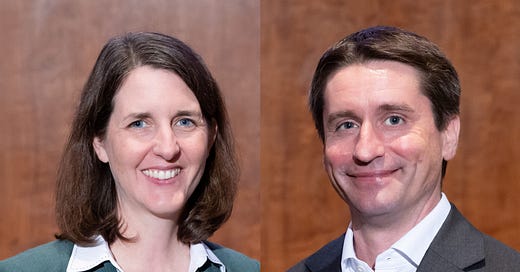
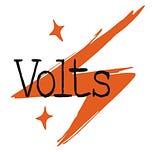


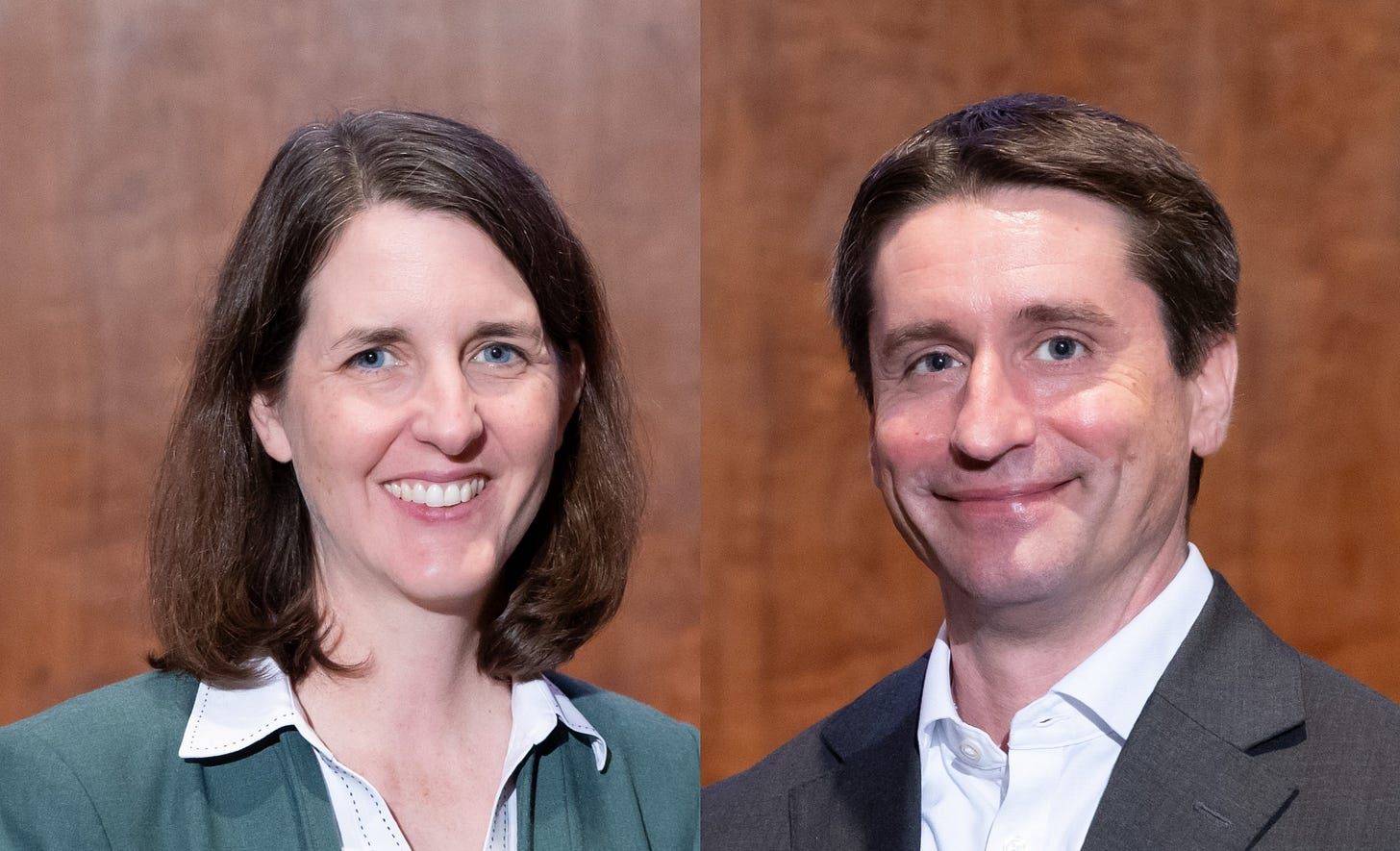




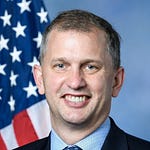



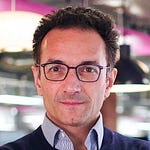
Share this post